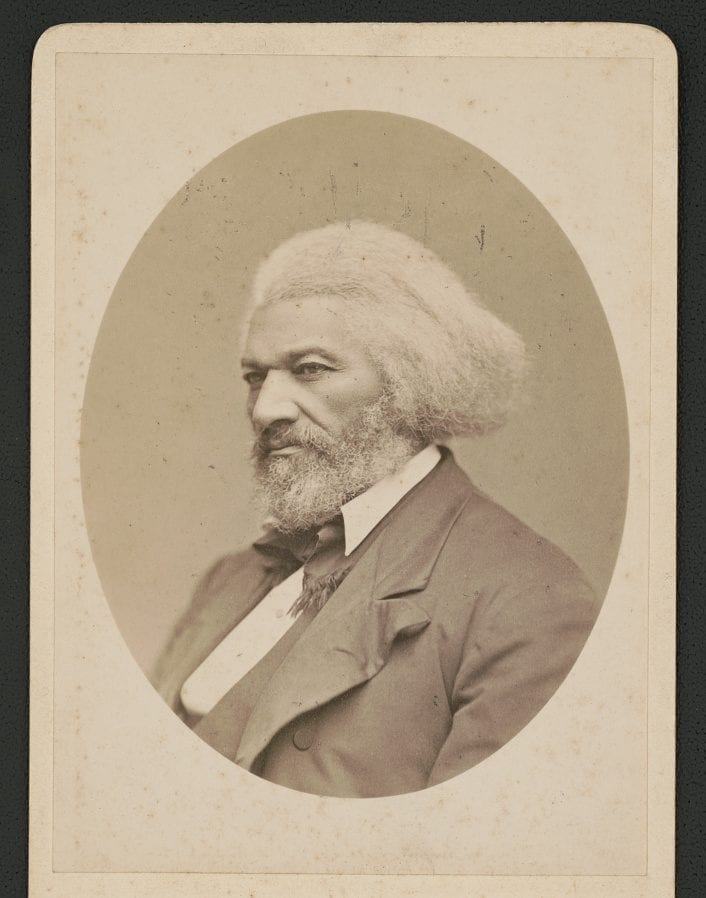

Conversation-based seminars for collegial PD, one-day and multi-day seminars, graduate credit seminars (MA degree), online and in-person.



No study questions
No related resources
In 1845, when “The Fugitive’s Song” was published as sheet music, Douglass had just published his autobiography describing his life as a slave in Maryland—but not the means by which, in 1838, he had escaped. This cover illustration depicts an imaginative escape across the Ohio River, the boundary between North and South most escaping slaves had to cross. In the distance to his left are mounted pursuers, accompanied by dogs. Douglass points toward a signpost for New England at his right.
Source: Ephraim W. Bouve and Henry Prentiss. The Fugitive’s Song. Boston, 1845. Library of Congress, LC-DIG-ppmsca-07616

Conversation-based seminars for collegial PD, one-day and multi-day seminars, graduate credit seminars (MA degree), online and in-person.